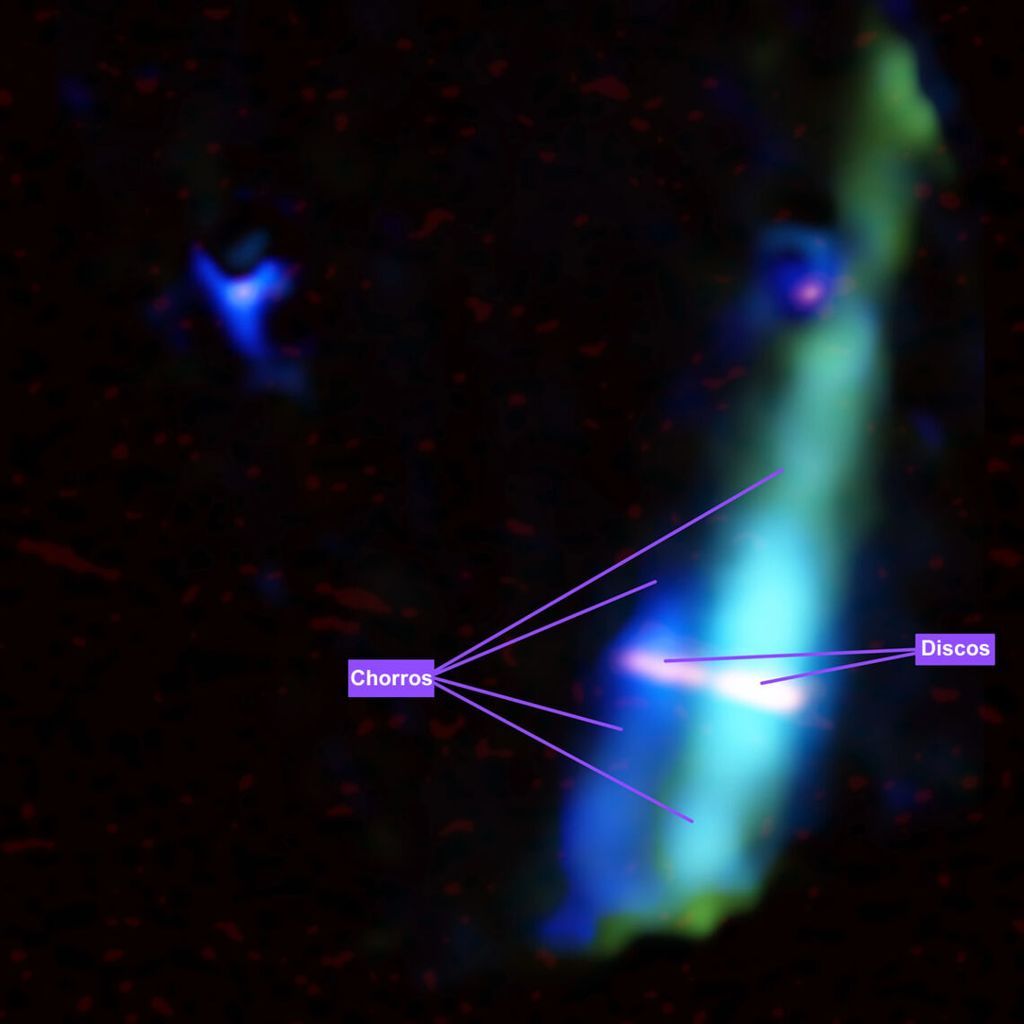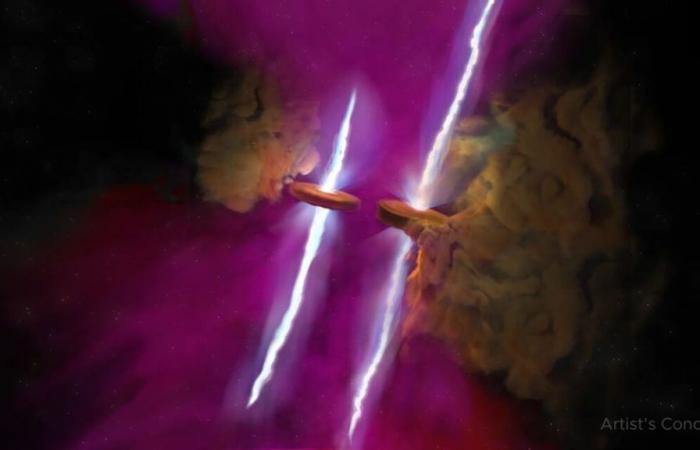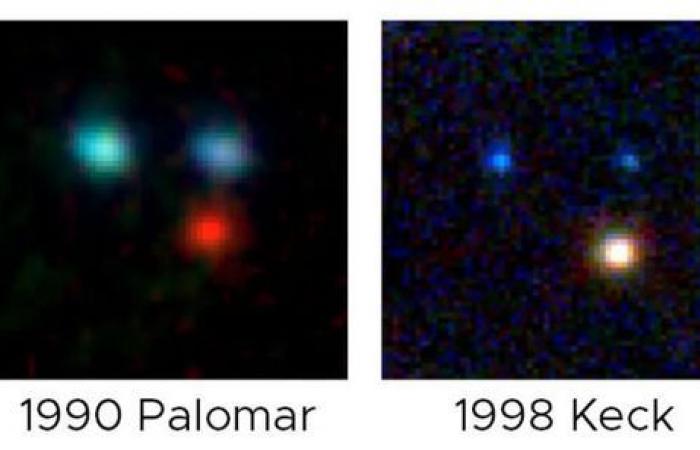As reported by the NASA in Spanishscientists got a big surprise recently with NASA’s James Webb Space Telescope when they pointed the observatory toward a group of young stars called WL 20. The region has been studied since the 1970s with at least five telescopes, but the unprecedented resolution of the Webb telescope was needed and specialized instruments to reveal that what researchers long thought was one star, called WL 20S, is actually a pair that formed about 2 to 4 million years ago.
Amazing discovery
The discovery was made using the Webb telescope mid-infrared instrument (MIRI) and was presented at the 244th meeting of the American Astronomical Society on June 12. MIRI also discovered that the twin stars have coincident jets of gas flowing into space from their north and south poles.
“We were speechless“said the astronomer Mary Barsony, lead author of a new paper describing the results. “After studying this source for decades, we thought we knew it pretty well. But without MIRI we would not have known that these were two stars or that these jets existed. It’s really amazing. It’s like having new eyesyes.”
The team got another surprise when additional observations from the Atacama Large Millimeter/submillimeter Array (ALMA), a group of more than 60 radio antennas in Chile, revealed that disks of dust and gas surround both stars. Depending on the age of the stars, planets may be forming in these disks.
The combined results indicate that the twin stars are nearing the end of this early period of their livesmeaning scientists will have the opportunity to learn more about how stars transition from youth to adulthood.
“The power of these two telescopes together is truly incredible.“, said Mike Ressler, MIRI project scientist at NASA’s Jet Propulsion Laboratory and co-author of the new study. “If we hadn’t seen that these were two stars, the ALMA results might have looked like just a single disk with a hole in the middle. Instead, we have new data on two stars that are clearly at a critical point in their lives, as the processes that formed them are coming to an end.”.

stellar jets
WL 20 is located in a much larger and well-studied star-forming region of the Milky Way called Rho Ophiuchia Huge cloud of gas and dust about 400 light years from Earth. In fact, WL 20 is hidden behind thick clouds of gas and dust that block most of the visible light (wavelengths that the human eye can detect) from the stars found there. Webb detects slightly longer wavelengths, called infrared, that can pass through those layers. MIRI detects the longest infrared wavelengths of all Webb instruments and is therefore well equipped to observe hidden star-forming regions like WL 20.
Radio waves can also penetrate dust, although they may not reveal the same characteristics as infrared light. The disks of gas and dust surrounding the two stars in WL 20S emit light in a range that astronomers call submillimeter; these also penetrate the surrounding gas clouds and were observed by ALMA.

But scientists could have easily interpreted those observations as evidence of a single disk with a hole in it if MIRI had not also observed the two stellar jets. Gas jets are composed of ions, or individual atoms with some stripped electrons that radiate at mid-infrared wavelengths., but not at submillimeter wavelengths. Only an infrared instrument with spatial and spectral resolution like MIRI could see them.
ALMA can also observe clouds of leftover formation material around young stars. Made up of entire molecules, like carbon monoxide, these clouds of gas and dust radiate light at these longer wavelengths. The absence of these clouds in ALMA observations shows that the stars have passed their initial formation phase.
“It’s surprising that this region still has so much to teach us about the life cycle of stars“said Ressler. “I’m excited to see what else Webb will reveal.”
This entry was published in News on June 15, 2024 by Francisco Martín León









